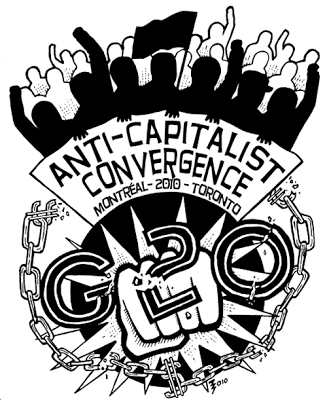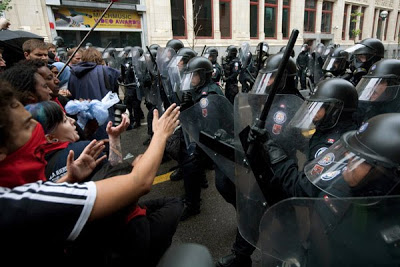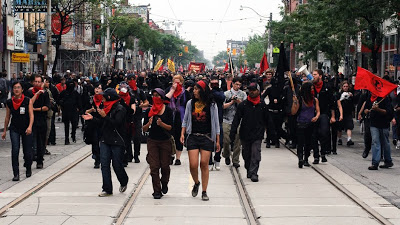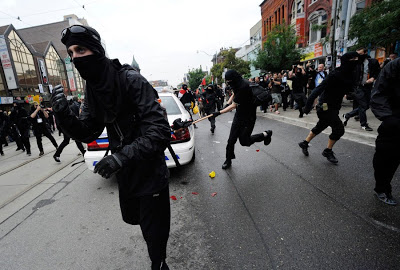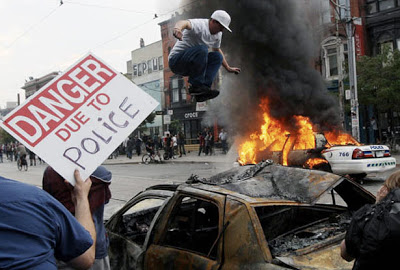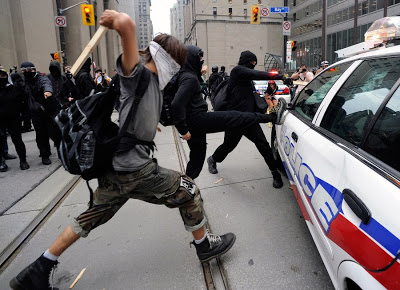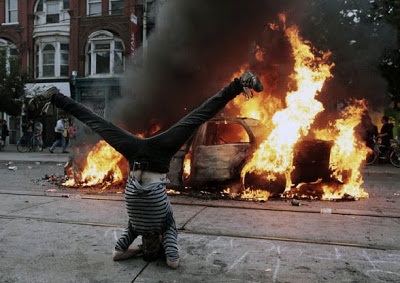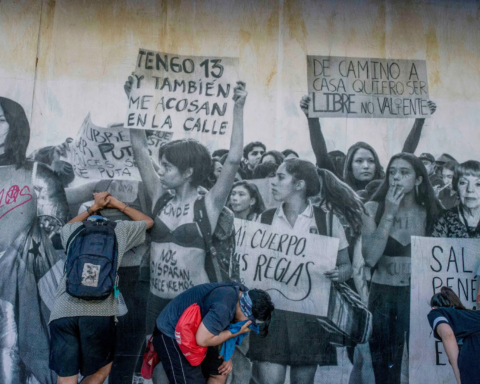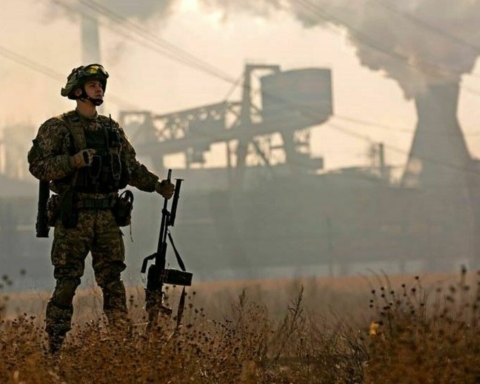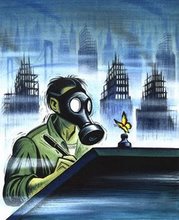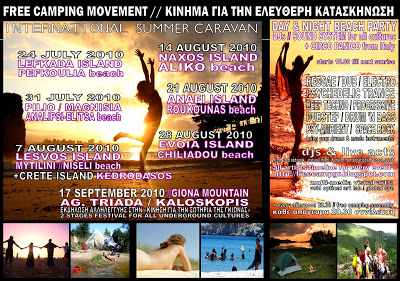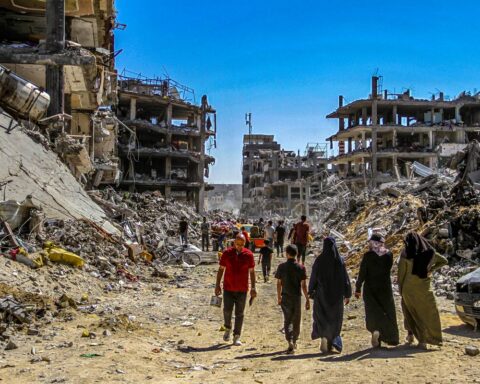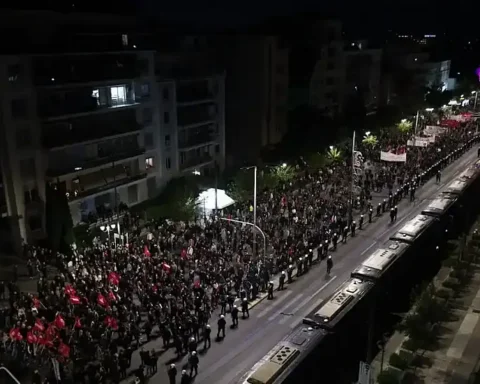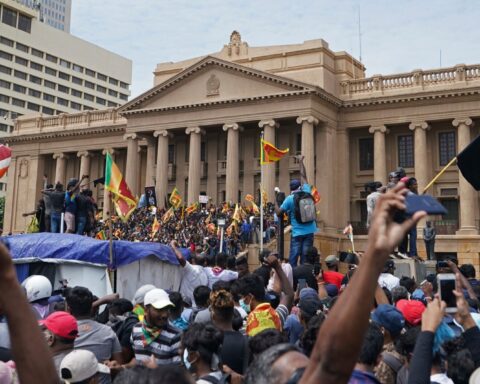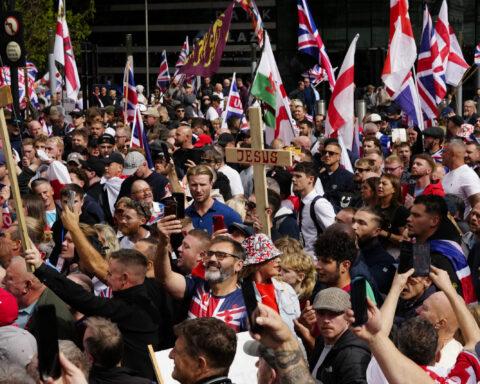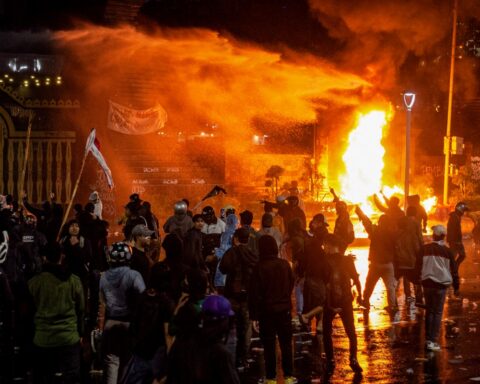|
In the last update offered by Crimethinc an overview of what happened in Toronto during the anarchist actions against the G20 June 25-27. We’ve received the following blow-by-blow report from on the ground there, offering context and analysis from inside the riots that shook Canada’s largest city. Anarchists have fully emerged in North America as a force to be reckoned with following the events in Toronto, and it is important to understand how this came about. The black bloc has become a household name throughout the region, and we must use this exposure to our advantage by maintaining our visibility even in the face of repression. We must also look critically at the events of the weekend in order to make strategic advances toward our goal of completely dismantling the domination and hierarchy of the present world.
Lead-upThe June G20 meeting was announced for Toronto in December of 2009. While anarchists were already preparing for the G8 in Huntsville, the announcement that a major summit would be held in the downtown core of Canada’s largest city created a stir among anarchists, and generated significant momentum for counter-summit actions to take place in Toronto. To our knowledge, anarchists participated in three basic models of organizing against the G20. We will briefly outline these to offer context to those seeking to understand the successes and failures of the Toronto protests.
|
Some anarchists were involved in the Toronto Community Mobilization Network (TCMN), which was not an anarchist group and did not organize actions but sought only to provide infrastructure and coordination for the convergence in Toronto. Many anarchists, especially those based in Toronto, chose to put their efforts into this group rather than organize along explicitly anarchist lines. Southern Ontario Anarchist Resistance (SOAR) was born of the desire for an explicitly anarchist group to organize an action framework against the summit, creating a semi-public format that many anarchists and allies could plug into. They issued calls to action fairly early on and while they saw fierce divisions over tactics and strategy in the immediate lead-up to the G20, they maintained the public call for three explicitly anarchist actions during the weekend. Other anarchists organized informally through established networks of friends sharing affinity and agreements on tactics, and they made a public call for a demonstration against prisons on Sunday June 26, the last day of the G20 summit. Also significant is that many different groups in Montreal organized massive support for the convergence against the G20; this included a reforming of CLAC, which had originally existed to oppose the Summit of the Americas in Quebec City in 2001.
There were other groups organizing against the G20, with which anarchists interacted in various ways. No One Is Illegal, a cross-Canada network working to end deportations and regularize non-status migrants, held a march and participated in much of the street action. The Ontario Coalition Against Poverty (OCAP) also organized for the summit, focusing on a march it called for Friday. The Canadian Labour Congress, a mainstream union coalition, organized the largest permitted march on Saturday. Various other protests occurred in the week leading up to the summit, including a queer action on Tuesday, a day of protest for climate justice on Wednesday, and a march in solidarity with Indigenous sovereignty on Thursday.
This is only a general overview of the different approaches anarchists took in Toronto, but perhaps it will help others understand how the Toronto actions compare to other convergences against global capitalism.
